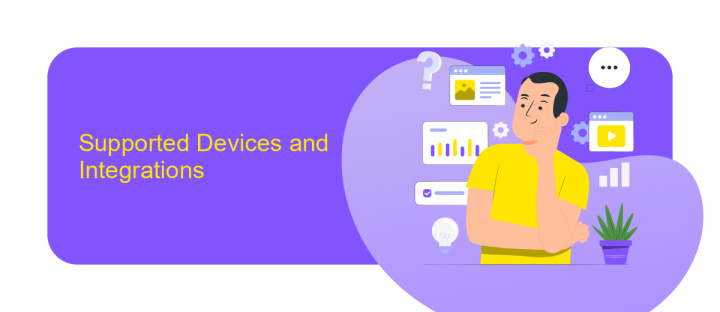Home Automation Platform Comparison
In the rapidly evolving world of smart homes, choosing the right home automation platform is crucial for seamless connectivity and control. With a myriad of options available, each offering unique features and integrations, it can be challenging to determine the best fit for your needs. This article provides a comprehensive comparison of leading home automation platforms, helping you make an informed decision for a smarter, more efficient home.
Platform Overview
Home automation platforms are transforming how we interact with our living spaces, offering seamless control over various smart devices. These platforms integrate multiple technologies, enabling users to manage lighting, security, climate, and entertainment systems from a single interface. With the rise of IoT, choosing the right platform is crucial for achieving a smart, efficient, and interconnected home environment.
- Compatibility: Ensure the platform supports a wide range of devices and brands.
- User Interface: Look for intuitive and user-friendly interfaces for easy control.
- Scalability: Consider platforms that allow for future expansion and upgrades.
- Security: Prioritize platforms with strong security measures to protect your data.
- Integration: Check for seamless integration with existing systems and services.
When selecting a home automation platform, it's important to assess your specific needs and future plans. A well-chosen platform not only enhances convenience and comfort but also contributes to energy efficiency and home security. As technology evolves, staying informed about the latest features and updates will ensure your home remains at the forefront of smart innovation.
Supported Devices and Integrations

When evaluating home automation platforms, it's crucial to consider the variety of supported devices and integrations. A robust platform should seamlessly connect with a wide range of smart home devices, including lighting systems, security cameras, thermostats, and voice assistants. This ensures that users can create a cohesive and efficient smart home environment tailored to their needs. Popular platforms often support major brands like Philips Hue, Nest, and Amazon Alexa, providing users with flexibility and choice in their smart home setup.
Integrations play a vital role in enhancing the functionality of home automation systems. Platforms that offer extensive third-party integration options enable users to automate complex scenarios and streamline their daily routines. Services like ApiX-Drive can significantly simplify the integration process by connecting various applications and devices without requiring advanced technical skills. With the ability to automate workflows and synchronize data across different platforms, ApiX-Drive empowers users to maximize their home automation experience, making it more intuitive and responsive to their lifestyle needs.
Automation and Customization

Automation and customization are key features that define the effectiveness of a home automation platform. A robust system should allow users to tailor their smart home experience to their unique needs. This involves not only automating repetitive tasks but also creating personalized scenarios that enhance convenience and efficiency.
- Rule-based Automation: Users can set specific conditions under which devices will operate, such as turning off lights when no motion is detected.
- Voice Command Integration: Seamless integration with voice assistants like Alexa or Google Assistant allows for hands-free control.
- Custom Scenes: Create scenes that adjust multiple devices simultaneously, such as a "Movie Night" mode that dims lights and turns on the TV.
- Scheduling: Set schedules for devices to operate at certain times, optimizing energy use and convenience.
- Remote Access: Control and customize home settings from anywhere using a smartphone app.
By offering these automation and customization capabilities, a home automation platform empowers users to create a living environment that is not only smart but also uniquely theirs. The ability to design tailored solutions enhances the overall user experience, making daily life more efficient and enjoyable.
Cloud vs Local Control

When choosing a home automation platform, one critical factor to consider is whether it operates primarily through cloud-based or local control. Cloud control involves managing your smart devices through an internet connection, allowing you to access and control your home remotely. This approach offers convenience and flexibility, but it also raises concerns about data privacy and dependence on a stable internet connection.
On the other hand, local control systems operate independently of the internet, using a local network to manage devices. This method provides greater security and reliability, as it is less vulnerable to external cyber threats and internet outages. However, it may limit remote access and integration with certain cloud-dependent services.
- Cloud Control: Offers remote access, easier integration with third-party services, but relies on internet connectivity.
- Local Control: Ensures data privacy, operates without internet, but may lack some remote functionalities.
Ultimately, the choice between cloud and local control depends on your priorities. If remote access and integration with a wide range of services are essential, cloud control might be the better option. However, if privacy and reliability are your top concerns, local control could be more suitable for your home automation needs.


Pricing and Plans
When comparing home automation platforms, pricing and plans are crucial factors to consider. Many platforms offer tiered pricing models, allowing users to select a plan that best fits their needs and budget. Basic plans often provide essential features such as remote control of devices and basic automation rules. As you move to premium plans, additional functionalities like advanced automation, voice control, and integration with a wider range of devices become available. Some platforms also offer a free trial period, allowing users to test the features before committing to a subscription.
For those looking to integrate multiple services and devices seamlessly, platforms like ApiX-Drive can be invaluable. ApiX-Drive allows users to automate workflows by connecting various applications and services without the need for coding. This can significantly enhance the capabilities of a home automation system, making it more versatile and efficient. Additionally, ApiX-Drive offers flexible pricing plans based on the number of integrations and tasks, ensuring that users only pay for what they need. This adaptability makes it a cost-effective solution for expanding home automation capabilities.
FAQ
What are the key factors to consider when choosing a home automation platform?
How do I ensure compatibility between different smart home devices?
What are the benefits of using a home automation platform?
How can I integrate various smart home devices seamlessly?
Is it safe to use home automation platforms?
Apix-Drive will help optimize business processes, save you from a lot of routine tasks and unnecessary costs for automation, attracting additional specialists. Try setting up a free test connection with ApiX-Drive and see for yourself. Now you have to think about where to invest the freed time and money!

